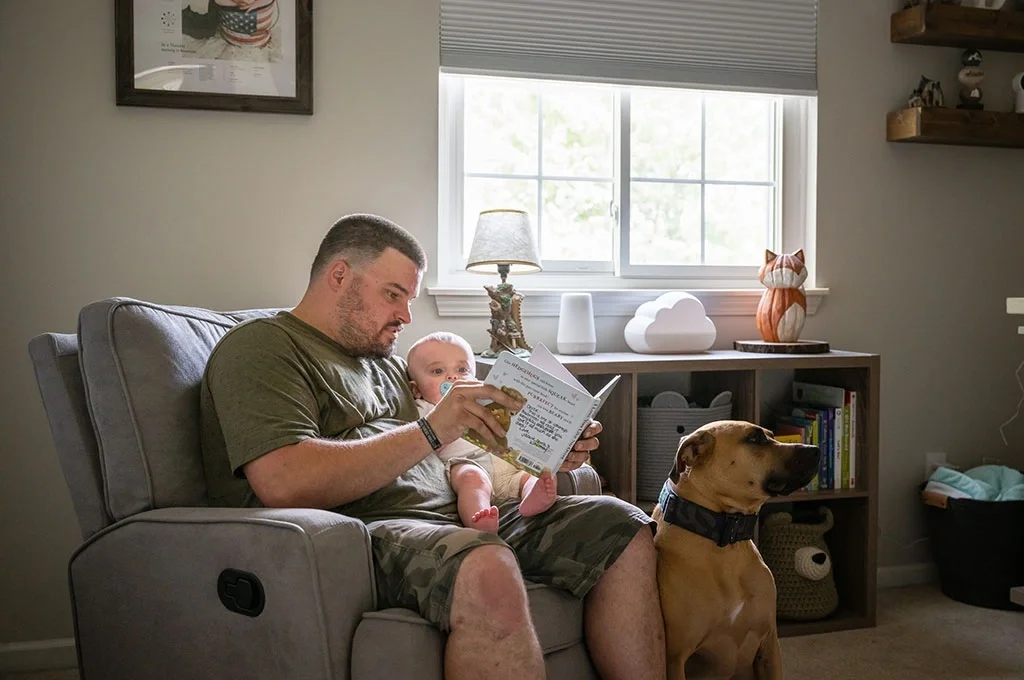
VA Debt Management | Debt Collection & Resolution Options
If you’ve received a VA debt letter, it’s super important to understand that it’s not the end of the world and that you aren’t alone. Many veterans face confusion about overpayments, copays, or benefit adjustments. The key is understanding how VA debt management works and how to use the tools available to protect your benefits and financial stability.
This guide breaks down VA debt: how it’s collected, your rights, and what steps you can take to get in front of it and take back control.
VA Debt Management: Debt Types and Collection Processes
When it comes to VA debt management, you’ve got to know what you’re up against before you can fix it. Not every debt is the same. Some come from overpayments, others from copays or education benefits. Each one follows its own process, deadlines, and set of options.
The table below lays out what causes debt, how collection works, and what kind of relief options you have.
|
Debt Type |
Common Cause |
Available Relief Options |
Key Deadlines |
Where to Start |
|---|---|---|---|---|
|
Disability Compensation Overpayment |
Rating or dependency changes |
Waiver, Repayment, Compromise, Dispute |
Dispute: 180 days Waiver: 1 year |
|
|
Pension Overpayment |
Income or household changes |
Waiver, Repayment, Compromise, Dispute |
Dispute: 180 days Waiver: 1 year |
|
|
Education Benefit Debt (GI Bill) |
Enrollment or attendance changes |
Waiver, Repayment, Dispute |
Dispute: 180 days Waiver: 1 year |
School’s VA official |
|
VA Medical Copay Debt |
Missed copays, insurance changes |
Review, Repayment, Dispute |
Dispute: 30 days. Hardship request: any time |
|
|
VR&E Overpayment |
Training or allowance error |
Waiver, Repayment, Compromise, Dispute |
Dispute: 180 days Waiver: 1 year |
VR&E case manager |
|
Home Loan Guaranty Debt |
Foreclosure or property loss |
Repayment, Compromise |
Varies by case |
Debt Resolution
A) Repayment Plans
This is the most common and straightforward option.
You agree to pay the debt monthly based on your financial situation. Most plans run from 12 months to several years.
What You’ll Need:
- VA Form 5655 (Financial Status Report)
- Proof of income, expenses, and any dependents
Typical Timeline: 30–45 days for approval.
Benefit: Stops collection activity immediately once approved.
Next step: Complete VA Form 5655 and submit it through the VA Debt Portal or by mail to the Debt Management Center to request a repayment plan review.
B) Compromise Offers
If you can’t afford to repay the full balance, you can request to settle for less.
This requires proof of permanent financial hardship, such as being on fixed disability income or unable to work due to service-connected conditions.
Typical Approval Rate: Around 15–20%.
Timeline: Usually 2–3 months.
Best For: Debts over $10,000 where repayment would create long-term hardship.
C) Waiver Requests
A waiver asks the VA to forgive the debt completely. It’s reviewed by the Committee on Waivers and Compromises (COWC) and must show that you weren’t at fault and that repayment would be unfair.
COWC looks at six factors:
- Your fault in creating the debt
- VA’s fault
- Whether collection causes hardship
- Whether collection defeats the purpose of benefits
- Whether it would unjustly enrich you
- Whether you relied on benefits to your detriment
Deadline: Must be submitted within 1 year of the first debt notice.
Average Decision Time: 4–6 months.
D) Disputes and Appeals
If you believe the debt was created in error, you can dispute it in writing within 30 days of receiving notice. During the review, the VA pauses collection until a decision is made.
Examples of Dispute Grounds:
- Dependency or rating changes not applied correctly
- School or attendance records showing accurate participation
- Billing errors for copays or CHAMPVA
If denied, you can appeal through the VA’s decision review process, beginning with a Notice of Disagreement and, if necessary, proceeding to the Board of Veterans’ Appeals.
Veteran Rights during Collection
Once a debt moves into collection, the rights outlined earlier do not disappear. They shift into what’s called due process protection. That means the VA must follow the law before determining your benefits or income.
Here’s how that works.
- Due Process: VA must send a written Notice of Indebtedness explaining what you owe, why you owe it, and how to respond. You have time to dispute or request relief before any offset begins.
- Hearing Rights: If you disagree with the debt amount or how it was created, you can request a formal hearing. A Debt Management Center officer or a Committee on Waivers and Compromises member will review your evidence and make a decision.
- Benefit Protection: VA can withhold part of your disability pay to recover debts, but they can’t reduce your income below what’s needed for basic living expenses unless you agree in writing. This safeguard exists to prevent hardship.
- Emergency Suspension: If you’re at risk of losing housing, utilities, or medical care, you can request an emergency hardship suspension. This temporarily stops collections while VA reviews your financial situation. Always document your hardship with bills, bank statements, or eviction notices, as it speeds up approval.
Your Rights as a Veteran
You have strong federal protections when dealing with VA debt. Knowing them keeps you in control.
|
Your Right |
Explanation |
|---|---|
|
Right to Written Notice |
The VA must send you a Notice of Indebtedness (NOI) explaining the debt amount and reason. |
|
Right to Dispute |
You have 30 days from the notice to dispute the validity of the debt. |
|
Right to Relief |
You can request a waiver, repayment plan, or compromise offer. |
|
Right to Verification |
You can ask for documentation showing how the debt was calculated. |
|
Right to Appeal |
If denied relief, you can appeal through VA’s decision review system. |
|
Right to Dignity |
VA cannot harass or threaten you. All contact must follow federal collection standards. |
The Impact of VA Debt on Benefits
VA debts can be reached directly into your benefits and your bank account if they aren’t handled in time. The good news is, every step of that process comes with options to get ahead of it. Here’s what actually happens when a VA debt goes unresolved and what you can do before it starts carving up your pay or benefits.
- Disability Compensation: VA can withhold anywhere from 25% to 100% of your monthly check, depending on the debt size and your financial circumstances. Contact the DMC to set up a reduced payment plan if that creates hardship.
- GI Bill Benefits: If you owe money for overpaid tuition or housing stipends, you won’t be able to use new education benefits until the debt is resolved or waived. Schools may also hold transcripts until VA confirms payment.
- VA Medical Care: If unpaid copay debt exceeds $1,000, VA can restrict access to non-emergency services until you set up a repayment plan or qualify for hardship relief. Emergency and service-connected care remain available.
- Treasury Referral: After about 120 days of delinquency, VA must refer the debt to the Department of the Treasury. Once there, Treasury can intercept tax refunds, garnish up to 15% of non-VA wages, or report the debt to credit bureaus. Once that happens, the VA can no longer reverse the charges, and you’ll have to work directly with Treasury to settle it.
Warning Signs of Scam Debt Collectors
In a better world, we wouldn’t have to worry about bad actors looking to exploit veterans in precarious financial situations. However, just like with promises of debt relief that can be too good to be true, there are scammers out there posing as VA debt collectors.
Red Flags
- Demands for payment through gift cards, wire transfers, or payment apps like Venmo or CashApp.
- Refusal to provide an official VA address or phone number for verification.
- Threats of arrest, legal action, or loss of benefits.
- Pressure to pay immediately without a chance to review your records.
Verify Before Paying
- VA Debt Management Center (benefit debts): 800-827-0648
- VA Health Resource Center (medical debts): 866-400-1238
- Log into your VA.gov account. Every legitimate debt will appear there.
Report Scams
If you suspect a scam, don’t ignore it. Report it:
- Federal Trade Commission: ReportFraud.ftc.gov
- VA Fraud Hotline:800-827-1000
Preparing Your Case File
When dealing with VA debt management, documentation is your best tool. The more organized and complete your file is, the faster your case moves and the harder it is for mistakes to slip through.
Here’s what you need to keep in your case file.
Key Documents for Your VA Debt Case File
FAQ
Q. How do I check the current balance or status of my VA debt?
A. Log in to your VA.gov account or call the DMC at 800-827-0648. They’ll confirm your balance and any pending actions.
Q. Can I handle multiple VA debts at once?
A. Yes. The DMC can coordinate multiple repayment or waiver requests, but each debt type follows its own rules and timelines.
Q. What if I already sent the documents but haven’t heard back?
A. Follow up after 30 days. Have your debt letter handy when you call so they can locate your file fast.
Q. Should I hire someone to handle my VA debt?
A. Usually no. Most debt issues can be handled directly with the DMC or a VSO. Don’t pay outside companies promising faster results.
Q. Can surviving spouses or dependents resolve VA debts?
A. Yes. If the debt is tied to the veteran's benefits, the estate or surviving family can request waivers or repayment plans.
Q. Does applying for relief stop collections?
A. It can. Filing a dispute, waiver, or hardship request within the deadline pauses most collection actions while it’s under review.
Q. What happens if I move or change banks during repayment?
A. Notify the DMC immediately. Missed or returned payments can restart the collection process or trigger a Treasury referral.










